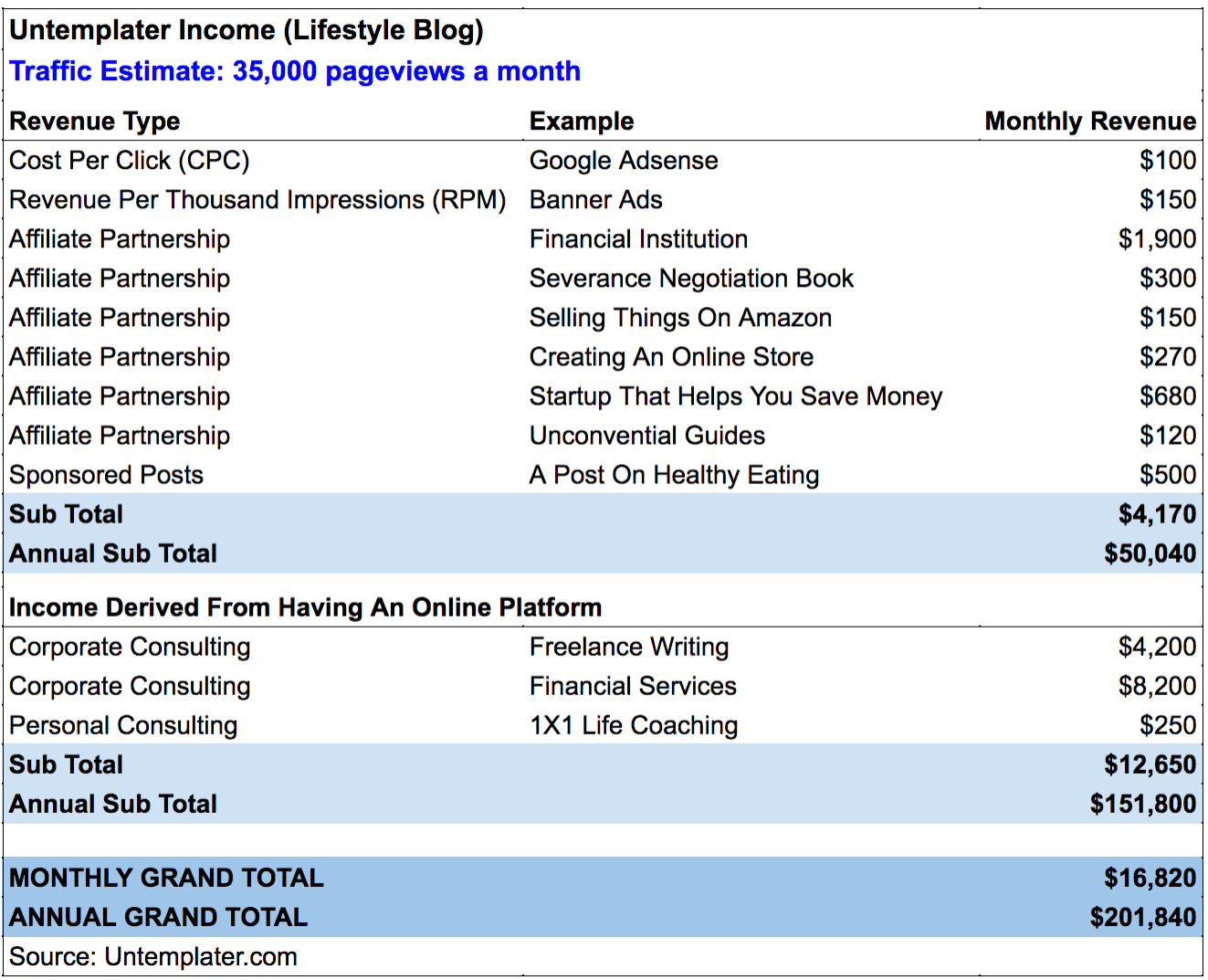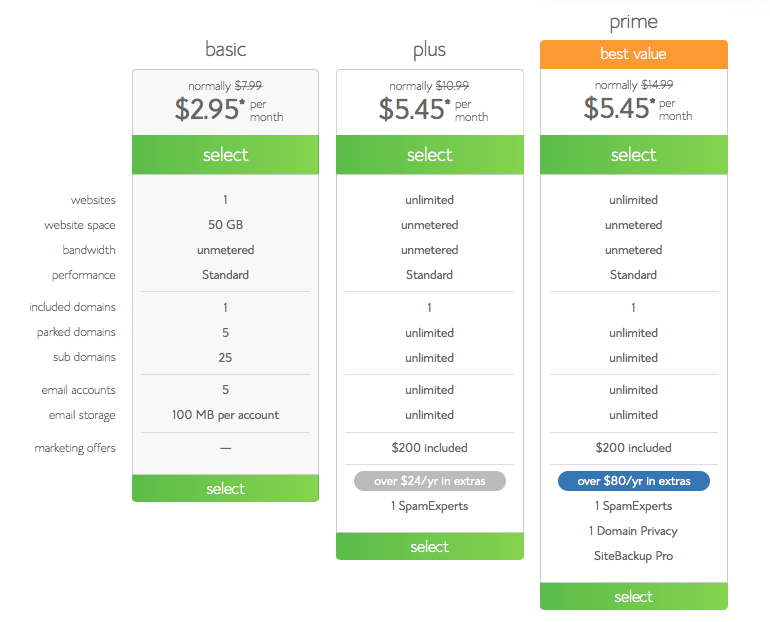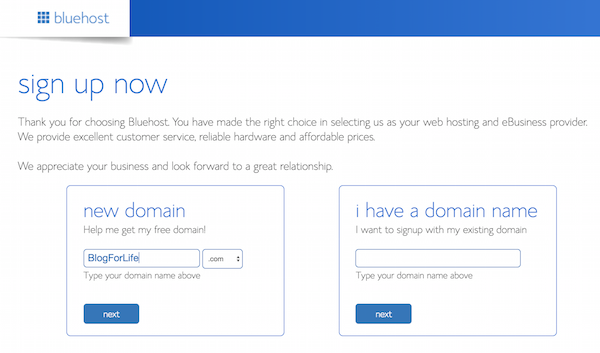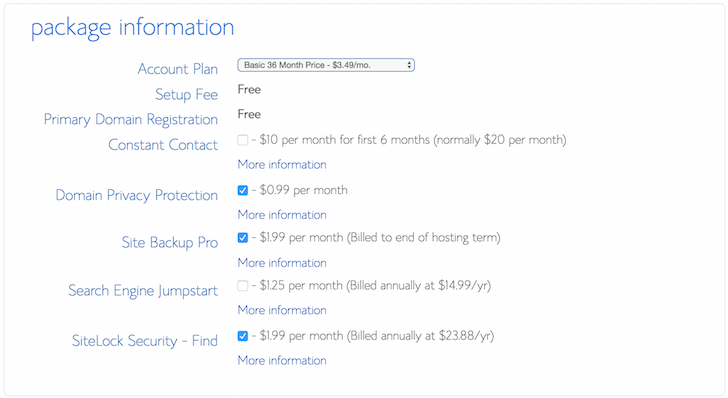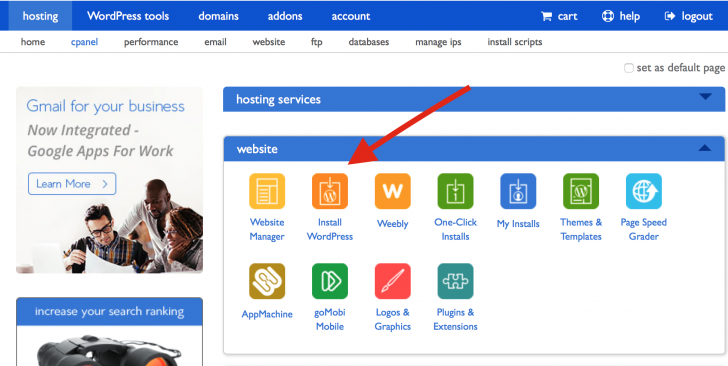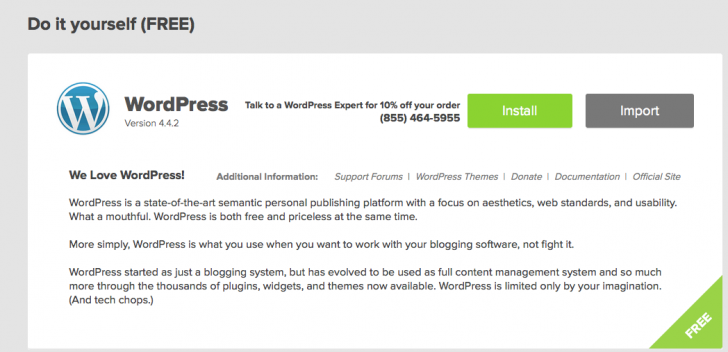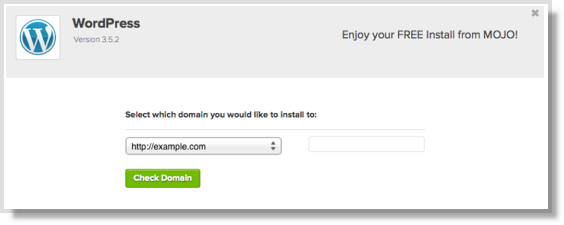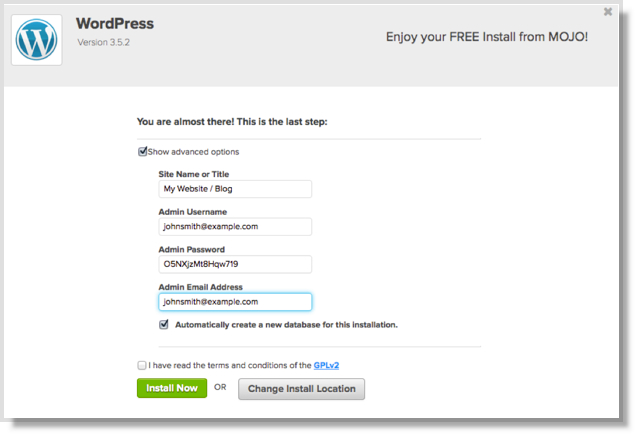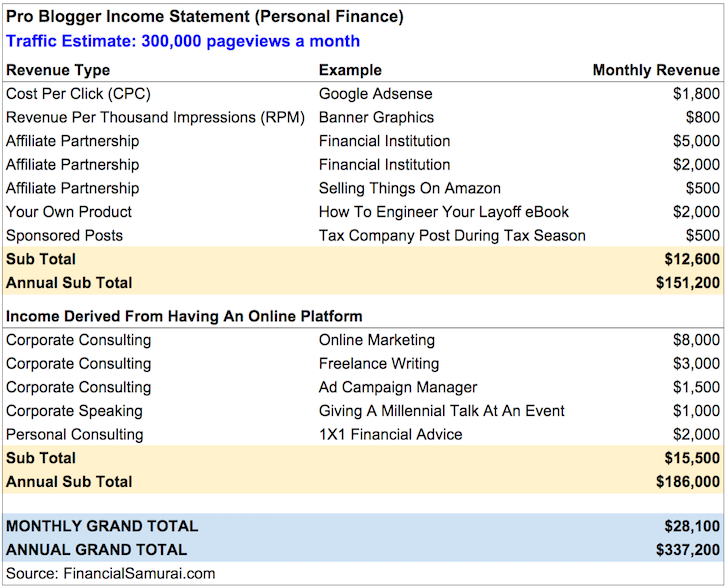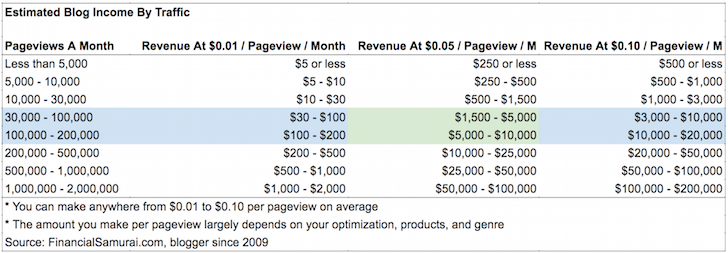Thinking about making money online and want to learn how to start a blog? You’re in the right place! I’ve run Untemplater.com since 2010. It’s been an exciting journey that allowed me to break free from the corporate grind at the age of 34, travel the world freely and helped me find new consulting gigs in areas I find interesting. With over 3 billion people online and growing, having your own website is a must today.
Here is a sample of how I make money without a day job. Untemplater is not that big with 35,000 pageviews a month, but it does rank well in search for people looking to break free from boring, soul-sucking day jobs. I can make roughly $50,000 a year from this site alone plus additional income from corporate consulting gigs and freelancing work I’ve gained simply because I learned how to start a blog.
How To Start A Blog: Set Up
Okay, now let’s take a look at how you can get started with a website of your own.
1) Sign Up For A Web Host
A web host is simply a server that has the ability to power your site and troubleshoot it whenever necessary. Without a host you can’t have a running website. Check out this article on the best web hosting companies for your business to get familiar with the best features.
There are free web hosting options out there.
But, if you want a more stable site with higher up times and faster load speeds, then it’s best to pay for a reliable web host company like Bluehost. Start with the basic package for only $2.95 a month and go from there as your site grows.
2) Find a Domain Name
When selecting your domain name, here are some tips:
- Choose a domain that is unique, fun and easy to remember e.g. Untemplater.com
- Choose a name with a phrase or key word that is often searched for e.g. LivingFree.com
- Choose a domain name that is completely unique or spelled differently e.g. Houzz
- Choose a shorter domain name because it is generally easier to spell correctly vs. a longer domain name e.g. Uber.com vs. EverybodysFavoriteRideShareCompany.com
- Choose a domain name that ends in .com for more credibility followed by .org and .net.
Once you go to Bluehost, click the basic hosting plan for only $2.95/month (this discounted rate is available for a limited time so take advantage now) to get you to the next page where you can input your New Domain name. Start punching away to see what’s available!
If your domain name is not available, Bluehost will give you a whole bunch of suggestions as to what’s available.
3) Select A Hosting Package
After you’ve selected the basic package and found a domain name that works, you’ll come across this portion of the sign up page with a whole bunch of different options. If you don’t want anybody knowing who owns your site click Domain Privacy Protection.
The Site Backup Pro for $1.99 a month may be a good idea because you never want to lose your work. But, there are free WordPress.org plug-ins once you get your site up and running that will backup your data for you for free. I wouldn’t choose and pay for any of the other options.
4) Install WordPress
WordPress is by far the most popular publishing platform on the web. WordPress is easy to set up, easy to use, and extremely customizable with endless amounts of free widgets and themes to choose from. Untemplater.com is a WordPress site.
After you sign up with your web host, go back to Bluehost and click on “login” the top right of the screen to login to the cpanel, check your email for the credential that you created.
Then install:
Choose where you want to install WordPress, in most cases with a new website. It will just be the domain name you originally picked.
Choose your WordPress login credential, I definitely suggest keeping the box checked for “Automatically create a new database for this installation.
5) Choose A Professional Looking Theme
Genesis Themes
The Genesis Theme is one of the most beloved WordPress themes out there. Genesis will provide you a simple, sleek layout, that is full customizable.
The theme is also Search Engine Optimization friendly and loads faster than other designs due to its framework. Load speed and design are critical for all websites. Studies show that if a webpage doesn’t load within 3 seconds, the majority of users will click away.
Go Generic Themes
If you don’t want to pay money for a Genesis Theme, you can always go generic. There are hundreds and hundreds of great free themes to choose from. I used one for a year until I kept coming across other websites that used my same theme. I wanted to be unique, so I finally went with Genesis.
The great thing about Genesis is that it is well followed by thousands of web designers out there. So if you ever want to get someone to customize your beautiful site, there are plenty of people who can do it for you.
Tips To Grow Your Website
1) Comment on other well-known blogs in your niche. If you leave a well-thought-out comment on a popular article, you will most likely have some readers trickle your way. It might just be one or two from each comment. But if you comment in many well-known places you will notice your readership increase quite impressively.
Each comment will leave a link-back to your site and links are the currency of the web. The more link-banks you have from a variety of authority websites, the better.
2) Write great content where you have an edge. It’s better to write from experience. For example, if you were successful in negotiating a severance package from a job you hate, write about that topic until the cows come home.
But if you’ve only been fired, then nobody will believe what you write. Always think about what makes your content unique, entertaining, and value-added.
3) Guest post on other blogs. You want to guest post on larger sites to get your name out there. Cultivate the relationship for as long as possible and keep trying to promote their site and help where you can before asking to guest post. Tapping a larger audience is huge for your site.
4) Focus on building community. Build a community first through story telling. The biggest blogs in the world have built great followings because they share personal stories and opinions on things you care about.
5) Have a consistent writing schedule. Untemplater generally publishes every Monday. Your readers will learn to appreciate your writing schedule and share your content after much consistency.
Ways To Make Money With Your Blog
Now that you’ve registered your domain name, signed up for an excellent hosting company, given your site a professional appearance, and have added great content, it’s time to consider making money from your blogging efforts.
You should mentally prepare for little-to-no money for the first year at least. Once you start building the momentum, the money will come.
Google Ads – Cost Per Click (CPC) Ads
Google Ads offers contextual ads (ads that automatically change based on the content you write). After choosing the customization options (text color, type, size of ad, etc.), you will be provided with a simple html code that can be placed anywhere on your website. Often the most popular area for this type of ad is near a menu or content title above the fold.
To place your ads, simply enter your WordPress account, click into your widgets, place a new text widget in the top slot on the left side of your page, copy and paste the html code, and you will soon see your very own ad displayed on your website.
One click can generate anywhere from $0.01 to over $5, depending on the types of ads that are displayed on your page. When your earnings account reaches a certain amount (typically $100), that money will automatically be deposited into your bank account.
Note: Never click on your ads to artificially boost your earnings. Google will know and ban you for a period of time. I clicked on my ads back in 2009 to see if they worked and see what they would display to readers and I got banned for a year!
Direct Ads
When companies (or their ad agents) contact you directly and pay you a lump sum to have their ad displayed on your page for a determined amount of time, this is a direct ad.
A direct ad can be in the form of a banner ad, a text link ad or a sponsored post. The amount you make from direct ads depend on your negotiating skills and your site’s traffic and authority.
Make sure you always add the rel=”no follow” attribute to a direct ad link in order to not pass pagerank according to Google’s guidelines. The last thing you want to do is lose your organic search traffic.
Affiliate Programs
The main source of advertising for many professional bloggers that target a specific audience is affiliate marketing. Affiliate links can’t be blocked by ad blockers and they are natural extensions to your existing content if you find the appropriate product/company you like.
For example, if you blog mainly about real estate, then having an affiliate partnership with a low-cost mortgage provider is a good idea. If you blog about health foods, then developing an affiliate partnership with organic food brands is smart.
With affiliate marketing, you don’t get paid per clicks or views like you would with Adsense, you get paid per conversion. A conversion can be a sale of a book or a sign up of a new customer.
The key to good affiliate marketing is to only highlight products that you actually use and believe in. Affiliate products should compliment your content that is already providing value. The best affiliate products offer solutions to problems.
You can find endless amounts of affiliate partners through advertising networks like CJ and Flexoffers. Some companies have created their own in-house affiliate network through HasOffers or Impact Radius. If so, it’s up to you to contact the affiliate manager directly or ask for a referral.
Create Your Own Products
There’s probably no product you believe in more than the one you create. The most common products are ebooks and courses. The only sacrifice you have to make is your time. But once your product starts selling, you’ll create an incredible perpetual passive income stream.
Use Multiple Methods at Once
Don’t be afraid to try new forms of ads and shift them around your site. Always be testing so you can find your optimal placement based off aesthetics and conversion rates.
It’s important not to overload your webpage with too many ads above the fold (the top part of your homepage where a user lands). Google has punished websites before for overstuffing. Experiment with all ad types and see what brings in the most revenue!
How Much Money Can You Make Online?
I’ve shared with you an example of my personal income statement above. Here is another example of a personal finance blogger with 300,000 pageviews a month after five years of blogging.
He makes roughly $151,200 a year from his blog, but also does consulting work on the site thanks to his blog for another $186,000 a year!
Understanding CPCs, CPMs, and CTRs
Cost Per Click (CPC, the cost refers to the advertiser) – When you post an ad on your site that pays you each time someone clicks on it, this is a CPC, which stands for “Cost Per Click”. You might earn as little as $0.01 a click or up to $1 a click, depending on how valuable the keyword is being clicked on. F
or example, you will likely earn more money if your Google Adsense ad has a link to “how to get rich” vs. “fluffy bunny.” Going the CPC route is the easiest way to make money.
Cost Per Thousand Impressions (CPM) – CPM is usually reserved for higher trafficked sites that can earn money after each 1,000 impressions/pageviews. If you have a banner ad on the homepage with a CPM of $3, you get to earn $3 for every 1,000 pageviews.
If your homepage receives 100,000 pageviews a month, you can therefore earn $300 a month (100,000 / 1,000 = 100 X $3).
Click Through Rate (CTR) – Your CTR measures your ads efficacy, however click through is measured. If your CTR is 2% and your ad receives 100,000 pageviews, then your ad will get 2,000 clicks. If your CPC for this ad is $0.50, then you will earn 2,000 X $0.50 = $1,000. Not bad!
You can also measure CTR lower down the funnel. Let’s say you have an affiliate ad that shows 100,000 times. You might get a 5% CTR, which means 5,000 clicks to the ad’s landing page. But, given it is an affiliate ad, you don’t get paid until someone signs up.
Then you’ve got to measure your CTR of the 5,000 clicks. If 3% of the 5,000 clicks sign up, that’s 150 clicks. If you get paid $50 for conversion, then that’s $750.
Potential Earnings Based on Traffic
Here’s a great chart my friend Sam at Financial Samurai created regarding how much bloggers can potentially make based on their pageviews, genre, and optimization strategies.
Essentially you can make anywhere from 1 – 10 cents a pageviews. Personal finance sites will make more than cat sites for example. So you’ve got to think carefully about the genre you choose.
Blog And Enjoy Life To The Fullest
There are over 3 billion internet users and the numbers is growing every day. What used to cost a bunch of money and time to create a site, now costs almost nothing.
The things you do today could change your life tomorrow.
All you’ve got to do now is try!
Note – the rates listed above are subject to change.
